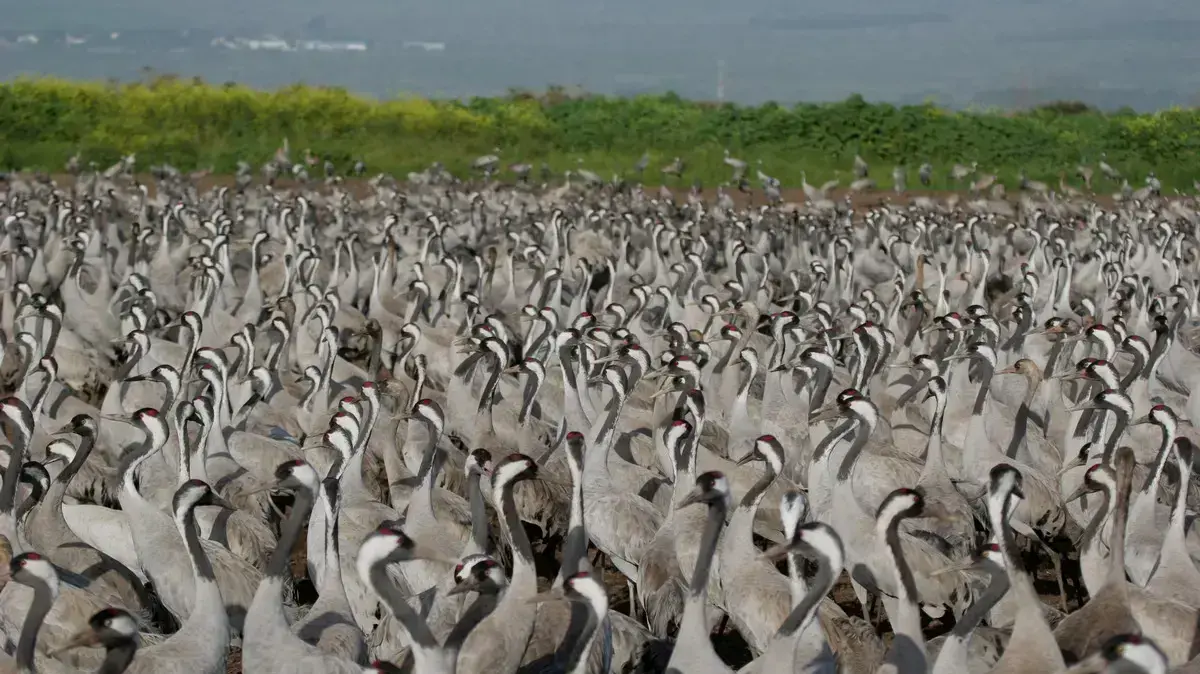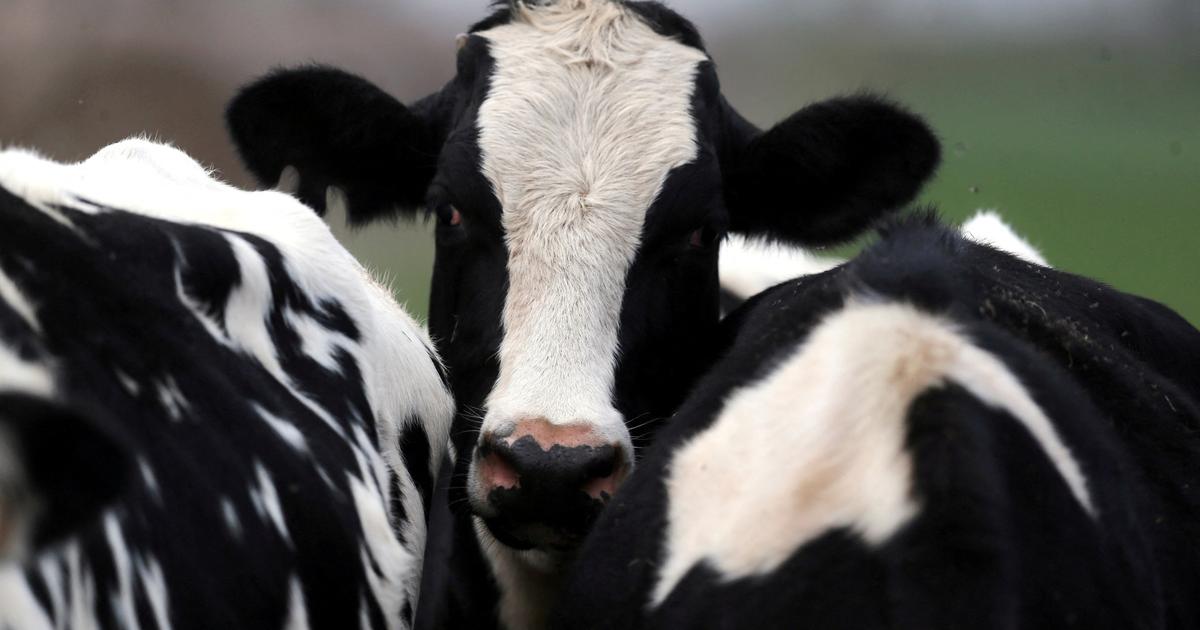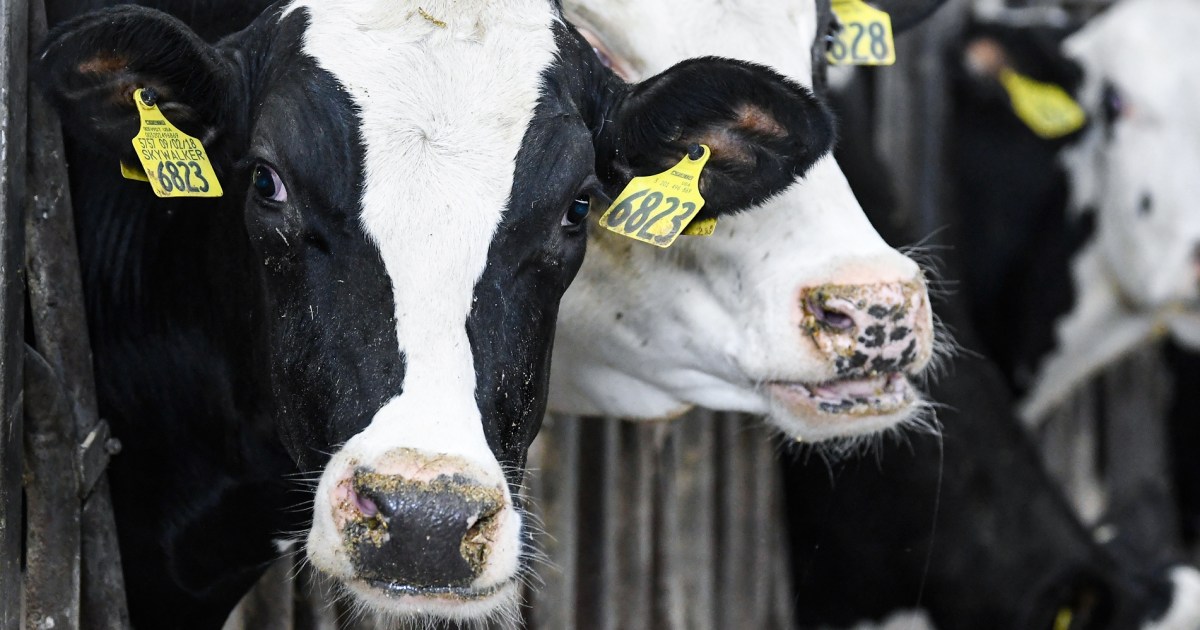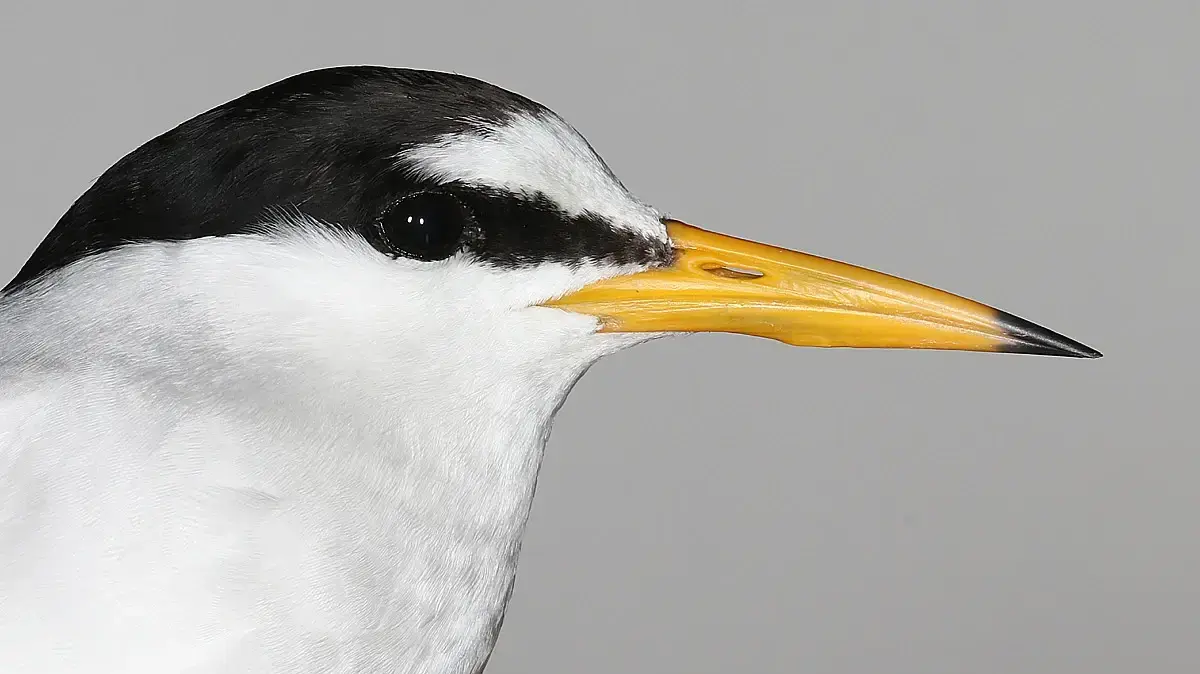After avian influenza: The project of feeding the cranes in the sick reed may be stopped
More than 8,000 cranes have died as a result of bird flu discovered in the Hula Reservoir last December, and opinions are now divided over the birds around which a thriving tourism industry has developed: whether to continue feeding them or not to interfere with nature and then they may stop migrating through Israel
Dana Elimelech
08/05/2022
Sunday, 08 May 2022, 08:10 Updated: 08:19
Share on Facebook
Share on WhatsApp
Share on Twitter
Share on Email
Share on general
Comments
Comments
Evacuation of the cranes from the Hula Reed (Hadas Kahner, Nature and Parks Authority)
Opinions are divided over the cranes around which a thriving tourism industry has developed.
Some argue that the cranes do not reach the Hula Valley because of the initiated feeding, but because of the abundance of food that exists in the area and in the farmers' fields, and if the feeding stops - the cranes will not change their migration route and their food will get from the abundance in the fields.
Further arguments are that it is necessary to stop feeding, since it is forbidden to interfere in nature in the population of cranes that are defined as wild animals.
In any case it is required to do so gradually.
These cranes, storks, pelicans, buffalo, catfish and papyrus gum are just some of the variety of flora and fauna in the Hula Reed in the Upper Galilee - one of the largest birding sites in the world.
In December last year, a deadly bird flu virus attacked the population of cranes arriving in Israel during the migration season.
Hello to the crane population, but as a result, the constant tension between nature and man and the environment has risen again, following which the crane feeding project has begun, which may now be stopped.
Infections with the deadly strain of bird flu have severely damaged the crane population in the reedbed, with more than 8,000 individuals dying at a site in the Hula Valley.
The main question that bothered the experts at the site, is whether the crane migration will be harmed and cease to exist.
But surprisingly and in the unique way of nature, the crane population has recovered quickly and is expected to continue on the natural migration route in the Hula Reed.
The sick reed is an acute (sleeping) site not only for the crane population, but for the variety of bird species that come from many countries in the world.
The reedbed has become one of the most unique birding sites in the world, where you can see birds migrating that you will not meet anywhere else.
More on Walla!
Watch: Removing the dead cranes from the sick reedbed
To the full article
The crane feeding project may stop.
Cranes in the Hula Reed (Photo: Inbar Shlomit Rubin)
Evacuation of dead cranes from the Hula Reservoir, December 2021 (Photo: Official website, Hadas Kahner Nature and Parks Authority)
Avian flu - is not only local to Israel
The crane migration season begins in the fall months.
The first arrive at Agmon at the end of September.
By the middle of October, thousands of individuals can already be found, while at the end of October, tens of thousands of individuals arrive in the reedbed.
Most of the cranes remain in the reed until mid-December and leave, but thousands of individuals also remain in the reed until the end of February and some until mid-March.
Every year, between 100,000 and 150,000 cranes migrate through the Hula Reed.
They reach the reedbed mainly from northwestern Russia but also from northern Europe, Estonia and Finland.
Most of them continue to Africa to Lake Tana in Ethiopia, where they spend the winter.
The nesting of the cranes is in northern Europe in Germany during the summer months.
Inbar Shlomit Rubin, field manager at Agmon Hahula, a birder and animal and plant expert at Agmon Hula, explains that the deadly bird flu that attacked the cranes is not only local to Israel, when a few weeks ago a large outbreak of bird flu broke out in the pelican colonies in Greece and the Balkans.
The first detection of avian influenza in Israel was in an Indian chicken coop in Nahalal, when in parallel with the outbreak of avian influenza in Israel, an outbreak of avian influenza also took place in Scotland, where over 8,000 Brenta Livnat birds died.
In an outbreak in South Africa, 18 endangered species of cormorants died, geese died from bird flu in Canada and the United States, and many hawks were infected with the virus in the Netherlands.
Apparently, in the last case of avian flu that became fatal, lap birds that are carriers of the avian flu virus transmitted the virus to the coop.
Because of the overcrowding in the coop, the virus mutated rapidly, became lethal and returned to nature.
Inbar explains that the avian flu virus was particularly deadly for the cranes, as the crane population was a "naive" population.
Meaning - a population that has never encountered the bird flu virus.
When the virus reaches a population that is as “naive” as the cranes, the morbidity is great and all the cranes in the reed have become ill.
"But there are those who manage to survive," says Inbar, explaining that, "from studies done on cranes and birds that have been found, they have been found to be vaccinated against the virus after the disease that only strengthens the immune system for them."
Most of the crane population in the world, unlike the cranes that reach the reedbed, do not migrate through the sick reedbed but through European countries.
In the past the cranes used to migrate mainly to northwestern Africa, but today they also reach countries like Spain and France.
This year alone, says Inbar, 280,000 cranes were counted in Spain.
"The big riddle in cranes is how they choose the migration route and select the acute area."
The crane population is "naive", meaning that it has never encountered the virus (Photo: Inbar Shlomit Rubin)
It is not clear how the cranes choose their migration route (Photo: Inbar Shlomit Rubin)
Feeding cranes - good or bad for nature?
The crane feeding project may end after 20 years, during which farmers fed the cranes in the sick reed during each migration season, after being recommended by the National Emergency Authority (Rachel) to stop feeding following the deadly outbreak of bird flu in cranes. Feeding is done while concentrating the cranes In the field can cause another outbreak of bird flu.
The crane feeding project began following changes in agricultural crops in the Hula Valley. In the 1990s most of the field crops were cotton, but with China's entry into the textile industry they stopped growing cotton and began growing food. Which are one of the best foods for migratory birds, as peanuts are rich in fat and food staples are essential for them and are used as food for cranes.
In the late 1990s, following the numerous damages to farmers, the cranes project began which provided a solution for farmers through the proactive feeding of the cranes in the Hula reedbed area.
Inbar explains that, the method of feeding was determined by the sowing and harvesting of the crop in the field.
The first method of feeding is done in the late summer months, after the corn is collected and at the end the peanut dish remains a large depreciation in the field.
Farmers use cranes because peanuts left in the field can develop a toxic fungus and damage crops, and the cranes know how to clean the field completely and in these cases bring great benefit to the farmers.
The cranes project provided a solution for farmers through their initiated feeding (Photo: The Society for the Protection of Nature, Jonathan Meirav)
But the significant damage is to winter crops, when the fields are sown.
The cranes are a very smart bird that quickly learns the challenges posed by farmers.
The cranes learned to remove the seeds from the soil immediately after sowing.
As a result, starting in November, a massive protection of the fields from the cranes begins and in an attempt to encourage them to continue their migration.
Another feeding method is done in mid-December, when the migration ends and the sick reed begins neat feeding for cranes mainly of corn.
Feeding is not done by the reedbed, but through an agricultural interface where farmers apply for a feeding permit from the Nature and Parks Authority.
At this time, it is still not possible to know whether the crane feeding project will continue this year as well.
Inbar explains that, opinions are divided regarding the cranes around which a thriving tourism industry has developed.
Some argue that the cranes do not reach the Hula Valley because of the initiated feeding, but because of the abundance of food that exists in the area and in the farmers' fields, and if the feeding stops - the cranes will not change their migration route and their food will get from the abundance in the fields.
Further arguments are that it is necessary to stop feeding, since it is forbidden to interfere in nature in the population of cranes that are defined as wild animals.
In any case it is required to do so gradually.
Although the population of cranes is the main attraction for tourism in the reedbed, as they continue to migrate the excitement around them calms down and a historical natural wonder is revealed that should not be missed.
Tourism
news
Tags
Agamon Hula
Cranes









/cloudfront-eu-central-1.images.arcpublishing.com/prisa/GLQIPWOC3VBT3BKZRNAZOQJEQU.jpg)